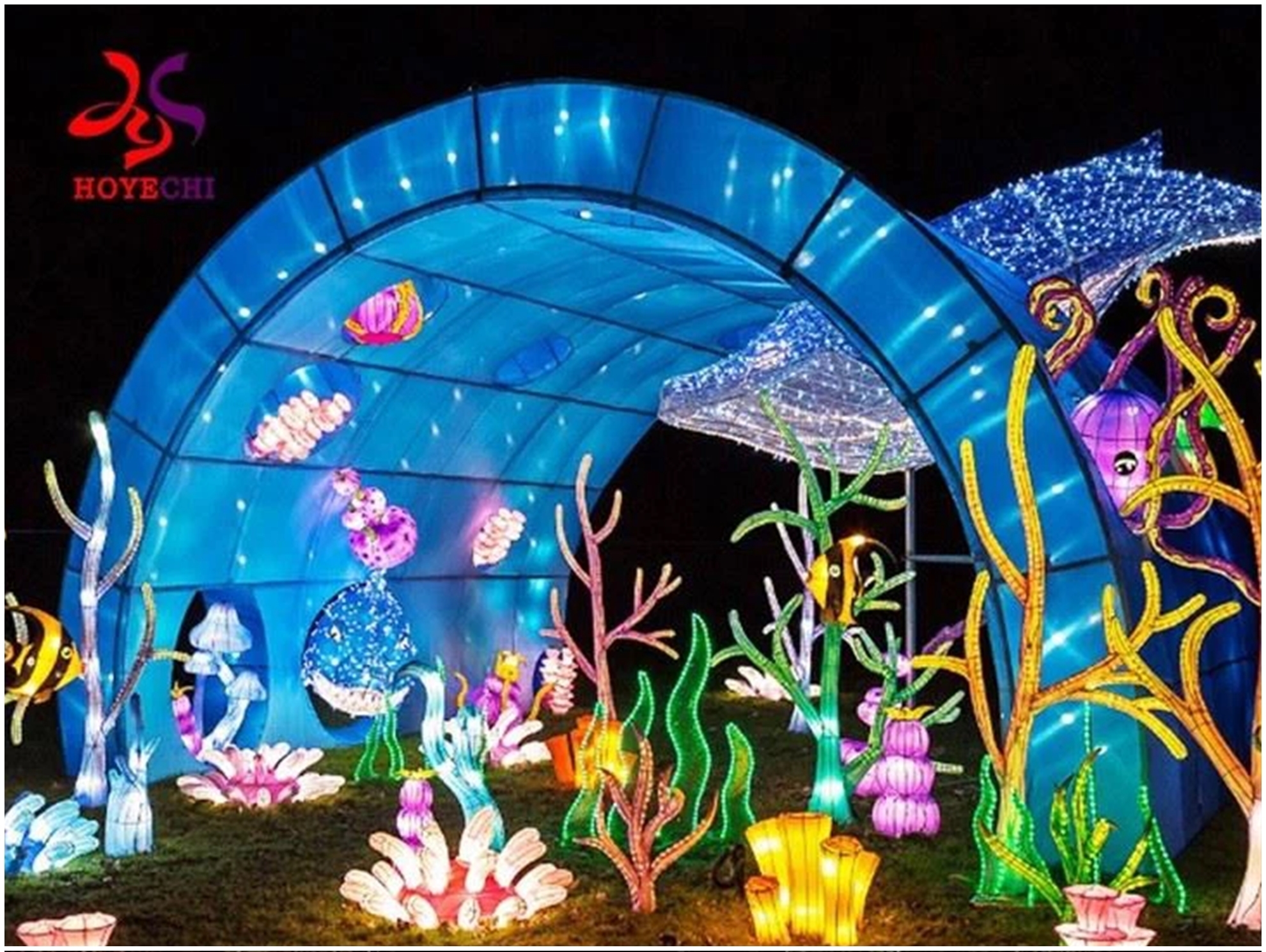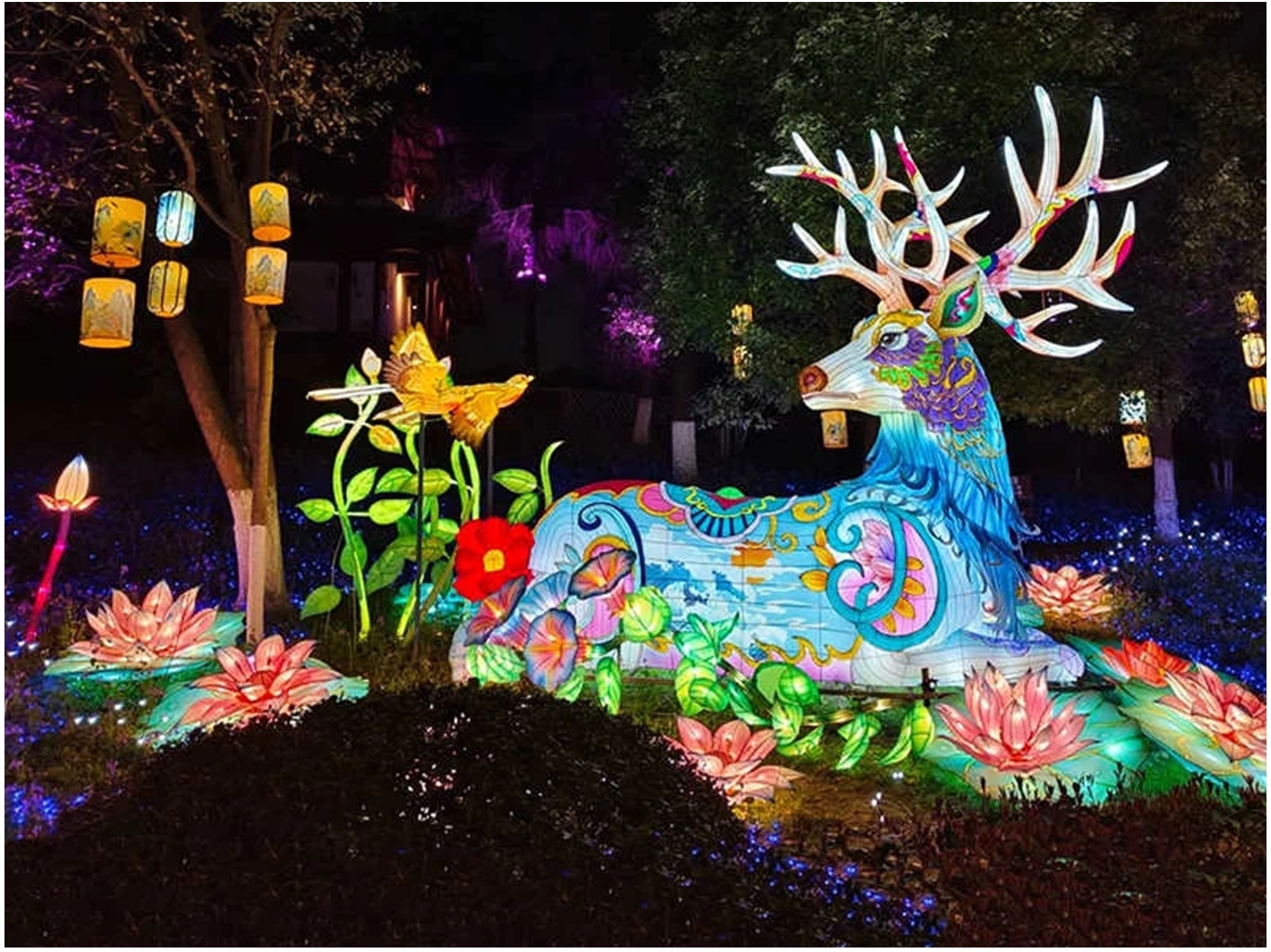The Cultural and Economic Magic of Light: Four Major Chinese Lantern Festivals in the United States
As night falls, the glow of countless lanterns lights up not only the darkness but also the shared joy of culture and art.
In recent years, Chinese Lantern Festivals have become a major outdoor attraction across the United States.
This article introduces four of the most representative events — North Carolina Chinese Lantern Festival, Philadelphia Chinese Lantern Festival, China Lights Magical Forest, and Gulf Coast Chinese Lantern Festival — exploring how these dazzling displays bridge cultures, boost local economies, and redefine artistic innovation.
1. North Carolina Chinese Lantern Festival (Cary, North Carolina)
Every winter, the Koka Booth Amphitheatre in Cary transforms into a glowing wonderland.
Hundreds of handcrafted lanterns, created by artisans from Zigong, China, fill the park with magnificent dragons, phoenixes, koi fish, and blooming peonies.
Since its debut in 2015, the festival has become one of the South’s most popular winter celebrations, drawing over 200,000 visitors each year.
It allows locals to experience the beauty of traditional Chinese craftsmanship while fostering cross-cultural understanding.
Economically, the event boosts tourism, hospitality, and dining industries, generating millions in seasonal revenue and revitalizing the local winter economy.
2. Philadelphia Chinese Lantern Festival (Philadelphia, Pennsylvania)
Each summer, Franklin Square Park in downtown Philadelphia turns into a luminous paradise.
Vividly colored, large-scale lanterns — from towering dragons to floating lotus flowers — create a dreamlike atmosphere that blends history, art, and community.
The festival is a model of how cultural events can drive the nighttime economy.
During its run, surrounding restaurants and shops report sales increases of 20–30%, while the park attracts thousands of nighttime visitors.
By combining traditional Chinese lantern art with live performances and food markets, the festival has become a defining feature of Philadelphia’s summer nightlife and a symbol of its cultural diversity.
3. China Lights Magical Forest (Wisconsin)
Every autumn, the Boerner Botanical Gardens in Wisconsin host the enchanting China Lights Magical Forest.
The garden transforms into an illuminated landscape with over 40 large-scale lantern installations featuring animals, flowers, and mythological scenes.
Unlike traditional seasonal festivals, this exhibition emphasizes artistic innovation and technology.
LED animations, programmable lighting systems, and interactive features bring a modern vibrancy to the ancient craft.
The event also invites Chinese and American artists to collaborate, merging heritage techniques with contemporary design.
It is not just a celebration — it’s an immersive art experience that redefines how audiences interact with light and nature.
4. Gulf Coast Chinese Lantern Festival (Alabama)
In spring, Bellingrath Gardens in Alabama hosts the Gulf Coast Chinese Lantern Festival, a breathtaking blend of light and landscape.
Dozens of enormous lantern sculptures — dragons, peacocks, and sea creatures — are handmade by Zigong artisans and assembled on-site after months of preparation.
Set against the backdrop of the Gulf Coast’s mild climate, these installations create a “Southern Night Garden” unlike any other.
The festival has strengthened cultural exchange between China and the U.S., while also boosting tourism in the region.
For Alabama, it represents not only a visual feast but also a bridge connecting local culture with the wider world.
5. The Multifaceted Value of Lantern Festivals
Chinese Lantern Festivals across the U.S. offer more than artistic beauty. They embody three key dimensions of value:
-
Cultural Exchange
The lanterns showcase traditional Chinese artistry and allow audiences worldwide to experience the symbolism and storytelling of Eastern culture. -
Economic Impact
Each festival contributes millions of dollars in tourism revenue, supporting local businesses and strengthening the nighttime economy. -
Artistic Innovation
By merging traditional silk-and-steel craftsmanship with modern LED technology, lantern festivals have evolved into large-scale public art experiences.
6. Frequently Asked Questions (FAQ)
Q1: When did Chinese lantern festivals become popular in the United States?
A: Large-scale lantern festivals began gaining popularity around 2010. The earliest major events appeared in North Carolina and Philadelphia, eventually expanding nationwide as U.S. parks partnered with Chinese artisan teams.
Q2: Are the lanterns made in the U.S.?
A: Most lanterns are handcrafted in Zigong, China — the historical center of lantern-making — and then shipped to the U.S. for final installation. Some designs are customized to reflect local culture and themes.
Q3: What economic benefits do these festivals bring?
A: Organizers report that major lantern festivals generate millions in tourism and dining revenue each year, while creating seasonal jobs and revitalizing local commerce.
Q4: Are lantern festivals held only in winter?
A: Not necessarily. The North Carolina event takes place in winter, Philadelphia in summer, Wisconsin in autumn, and Alabama in spring — forming a year-round circuit of light celebrations.
Q5: Why are Chinese lantern festivals so popular in the U.S.?
A: Lanterns combine art, storytelling, and entertainment. They appeal to families, tourists, and art lovers alike — offering an immersive cultural experience that transcends language and geography
Post time: Oct-25-2025






